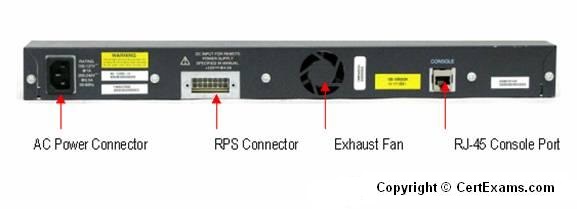
- Default gateway for setting up cisco 2950 switch software#
- Default gateway for setting up cisco 2950 switch code#
- Default gateway for setting up cisco 2950 switch password#
- Default gateway for setting up cisco 2950 switch series#
Stored in NVRAM copies startup-config to running-configĬonfig net - used to retrieve configuration Setup - Will start the the automatic setup the same as when you first boot the routerĬonfig mem - executes configuration commands
Default gateway for setting up cisco 2950 switch password#
Set password for auxiliary (modem) access:ĭetails the running configuration file (RAM)ĭisplays the configuration stored in NVRAM Set password for virtual terminal (telnet) access (password must be set to Quick LinksĮnable password - sets privileged mode passwordĮnable secret - sets encrypted privileged mode passwordĮnable secret - set encrypted password for privilegedaccessĮnable password - set password for privileged access (used when there is no enable secret and when using older software)
Default gateway for setting up cisco 2950 switch software#
IOS is the software used on the vast majority of Cisco Systems routers and most Cisco network switches. If you don't want to use the port you can set it to an unused VLAN like 999 with switchport mode access and switchport access vlan 999 and disable it using shutdown.This is a list of Cisco IOS commands and information. TLDR you shouldn't want to see nothing in the config for switchport mode because the default is dangerous. The is a security risk since DTP isn't authenticated which is why the recommendation is to explicitly set the port mode to access or trunk and if trunking then you should also set what the untagged VLAN is using switchport trunk native vlan and limit which VLANs are allowed using switchport trunk allowed vlan.

The point is the default port config will act as an access port on VLAN 1 and be able to dynamically turn into an 802.1Q trunk port with VLAN 1 untagged and allowing all VLANs if another Cisco switch negotiates the port with DTP. Implied in the default interface configuration and thus not shown you'll see: interface FastEthernet0/10īut the configuration will actually be closer to: interface FastEthernet0/10Īlong with some other defaults. Trunk in Cisco configuration means 802.1Q tagging (support multiple VLANs) not interface bonding (which is called port-channel). The best practice is to explicitly set a port to mode access or trunk depending on your need. In general the default port mode is dynamic so if you don't want switchport mode access to show up in the config then you want to use switchport mode dynamic auto which enables DTP (Dynamic Trunking Protocol). What version of IOS is it running and what generation Catalyst 2960? The error is a bit odd if you don't have a switchport nonegotiate in there.
Default gateway for setting up cisco 2950 switch code#
You must manually configure the neighboring interface as a trunk interface to establish a trunk link.īest practice is to hard code your ports to access mode unless there is a reason to have them set to something else. You can use this command only when the interface switchport mode is access or trunk.
Default gateway for setting up cisco 2950 switch series#
This is the default switchport mode on older switches, such as the Catalyst 29 Series switches. The interface becomes a trunk interface if the neighboring interface is set to trunk, desirable, or auto mode.


The interface becomes a trunk interface if the neighboring interface is set to trunk or desirable mode. switchport mode dynamic auto: Makes the interface able to convert the link to a trunk link.The interface becomes a nontrunk interface, regardless of whether the neighboring interface is a trunk interface. switchport mode access: Puts the interface (access port) into permanent nontrunking mode and negotiates to convert the link into a nontrunk link.So the switchport must be set to trunk, access, or auto negotiation. What you are looking for is DTP or Dynamic Trunking Protocol.


 0 kommentar(er)
0 kommentar(er)
